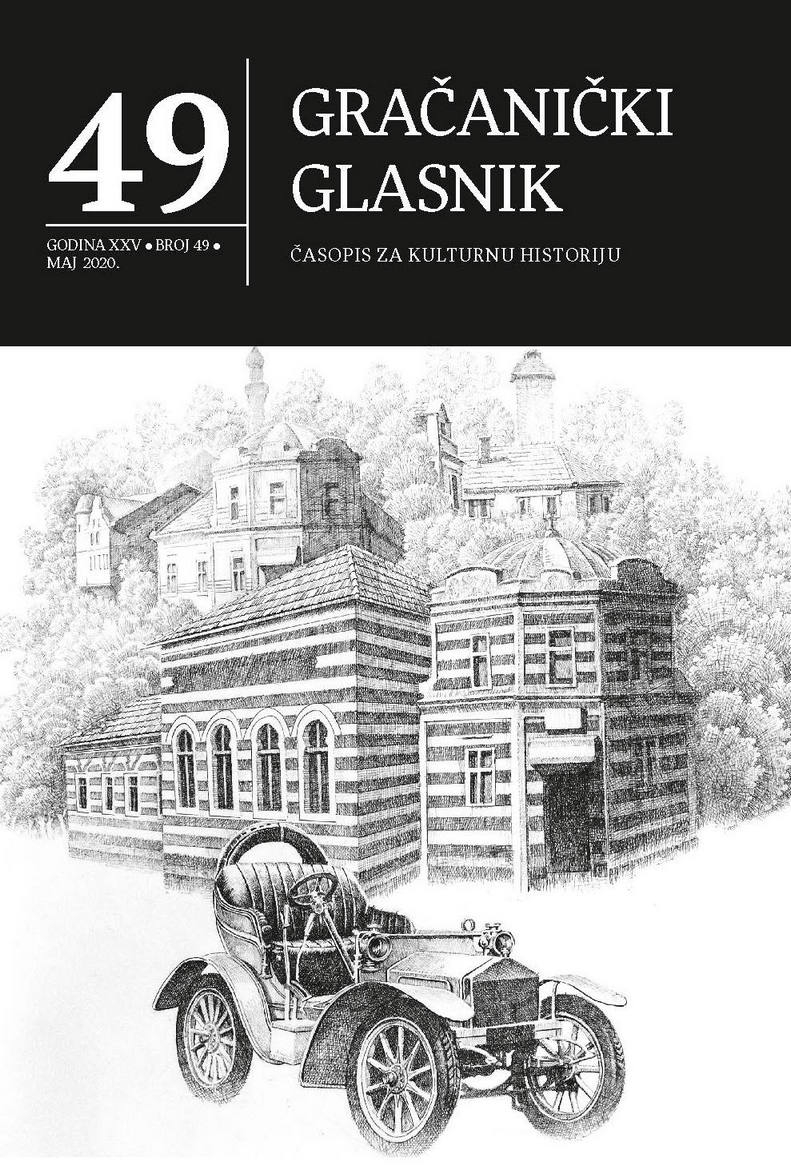Nacionalizacija i denacionalizacija Osman-kapetanove medrese u Gračanici
The nationalization and denationalization of the “Osman-kapetan” madrasah in Gračanica (A contribution to the urban development of Gračanica)
Author(s): Omer HamzićSubject(s): History, Recent History (1900 till today), Post-War period (1950 - 1989)
Published by: Izdavačka kuća »Monos« d.o.o
Keywords: Osman-kapetanova medresa; Gračanica; vakuf; dom kulture; komunistička vlast.
Summary/Abstract: This paper discusses the bad state of the old building of the “Osman-kapetan” madrasah due to the devastation that happened during the Second World War and in the immediate post-war period. The local communist authorities had neither the desire or will to help, and the waqf-ma’drif committee that was the owner of the waqf was scattered, weakened in a material and organizational sense, and thus was in no position to take any action. It was not until 1950 that a young party activist, teacher and secretary of the People’s district committee Ibrahim Hasanbegović, introduced an initiative to stop the further deterioration of the building. He made a public appeal that the district’s association of Cultural and Artistic societies, of which he was president, take over the madrasah as a long-term lease as a place for their activities. Thanks to the the support that he enjoyed from the official organs the contract for a long-term lease was already signed in 1951, the object was renovated and put into function. Bearing in mind that the association organized various amateur cultural activities, the madrasah was transformed into the city House of Culture, filled with appropriate and adequate contents (a room for meetings, the office of the People’s university, the city library, city coffeehouse and so on.) This setup remained for the next twenty years until 1978 until the construction and commissioning of the new House of Culture. After the construction of the new House of Culture the building was once again neglected and left to deteriorate, even though it was still “in the care of the People’s university.” Fortunate circumstances lead to a thorough renovation of the building by the local community of Gračanica with citizen support that was very pronounced and politically articulated through the branch of the Socialist Workers Union in the city area. The works were performed as a part of the large-scale renovation of the city center during the period of 1987-1990 when the whole town, that is, the central street, definitely got its current layout. After the first parliamentary elections, by unanimous decision of the multi-party Assembly of the municipality of Gračanica, the building was given back to the Islamic community. Consent was formally given by the Local community of Gračanica and the People’s University. This paper is based on primary sources (archival materials) as well as on the recollections and one incidental note (letter) of the teacher Ibrahim Hasanbegović, as well as on some memories of the author who was a direct participant in some of these events such as the renovation of the city center and the restoration of the madrasah, that is the old building of the House of Culture.
Journal: Gračanički glasnik - Časopis za kulturnu historiju
- Issue Year: 2020
- Issue No: 49
- Page Range: 55-72
- Page Count: 18
- Language: Bosnian

